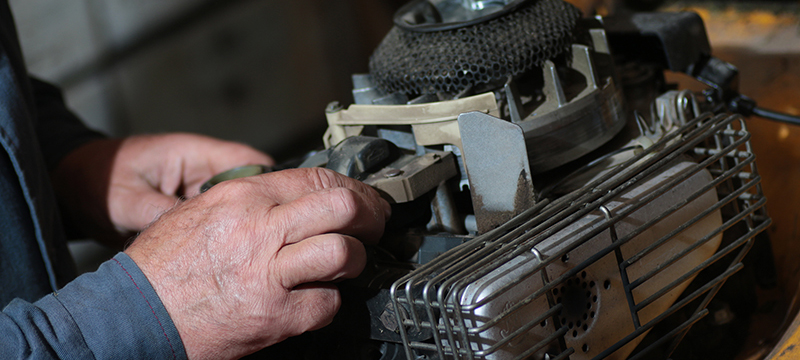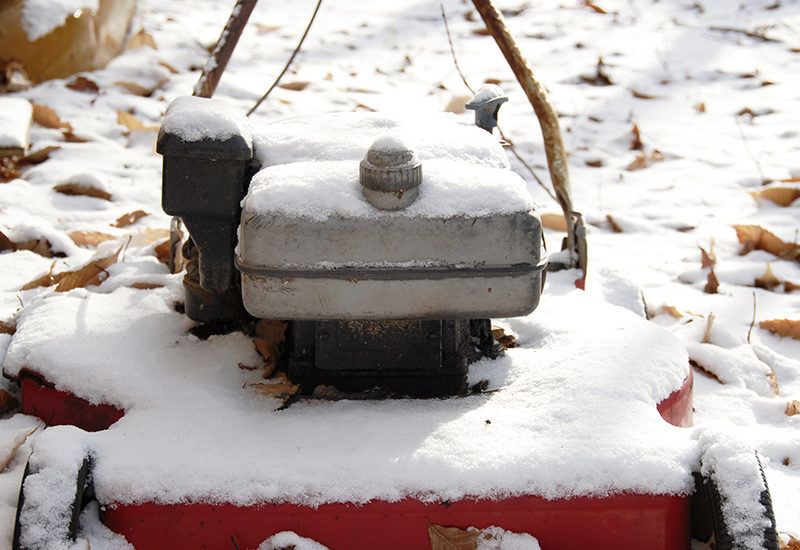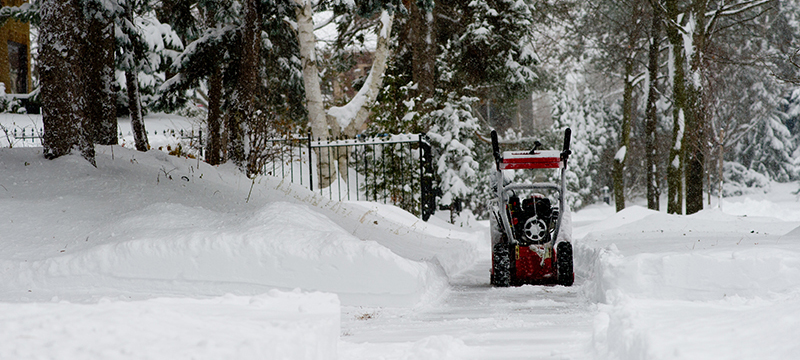When your outdoor power equipment stops working because of engine failure, replacing the entire unit may not be the best option. Instead, you may want to replace only the engine. This can save you money while allowing you to restore your equipment to working order. When choosing a replacement engine for any power equipment, it’s important to consider elements like the type of engine needed and additional features that increase the performance of your Honda power equipment.
Replacing Your Engine
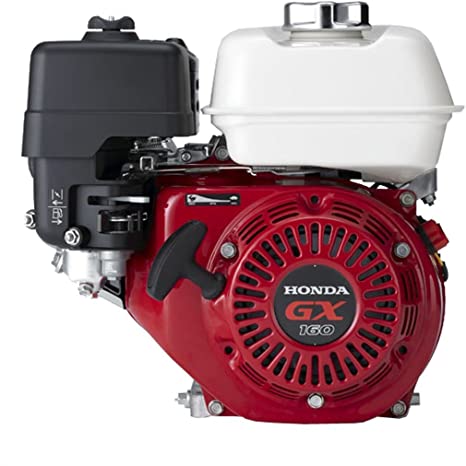
The first step to learning how to choose power equipment engines is to find one that matches the previous engine. This is important, as a different engine might not use the same number of bolts or the correct horsepower as the one you previously had. When replacing Honda engines, the steps to finding the correct engine are simple; you just need to find the model number for your engine. This is located on the old engine’s information plate. Once you have this information, finding the same model is often straightforward.
There are exceptions, of course. Sometimes, the model number on the old engine may no longer exist or be changed. This often happens when engines are altered to meet new requirements by the Environmental Protection Agency (EPA.) Finding the right engine requires a closer look at the features when this occurs.
- Look at the horsepower to find a similar model to the old engine that is no longer running.
- If the horsepower is unknown, look at the number of bolts and the pattern of the bolts required to mount your old engine. Your new engine must fit properly in your existing equipment, so this pattern must be the same.
- Think about how the engine will be used. Honda engine models are categorized based on their use. Some are designed specifically for commercial use and feature elements that protect them despite frequent and aggressive use. Other models are for residential use.
If you’re looking for a Honda engine to replace a competitor’s engine, you should always let the engine features guide you in choosing the correct engine. Consider features like:
- Engine performance
- Engine size
- Crankshaft type
- Crankshaft orientation
- Crankshaft cover’s tapped holes
- Base mounting
- Residential or commercial use
Types of Engines
When browsing a list of engines, you will find that they are often referred to as horizontal or vertical. This distinction relates to the position of the crankshaft in the engine. A vertical engine features a vertical crankshaft, which is turned by the horizontal movement of pistons. A horizontal engine, on the other hand, has a horizontal crankshaft.
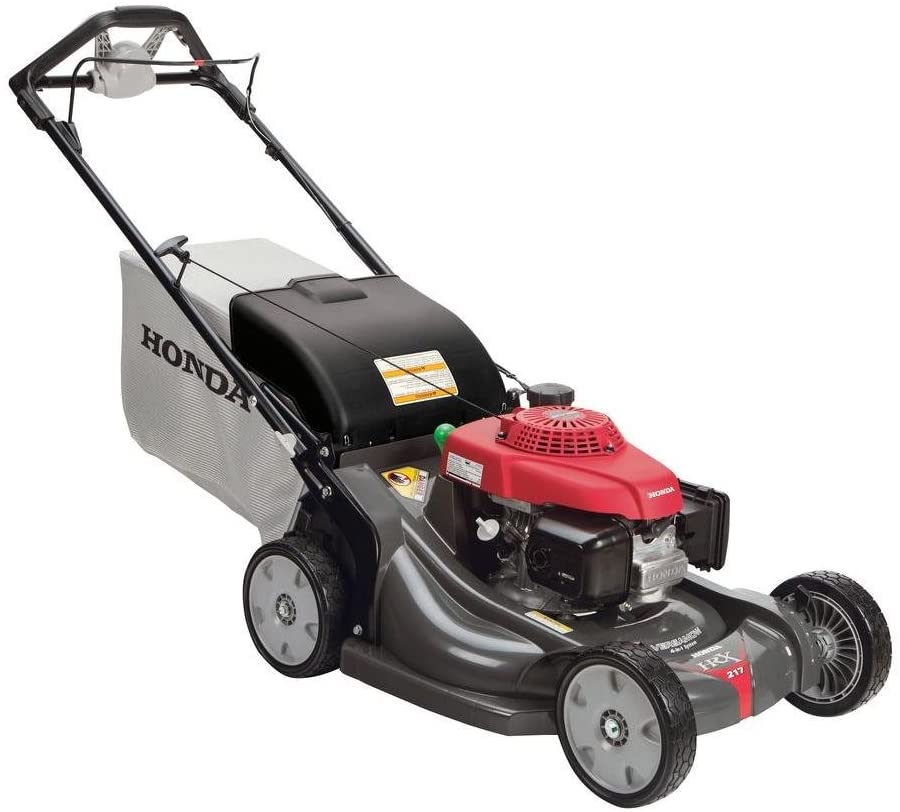
Both types of engines are used in power equipment. Horizontal engines are often used for general-purpose equipment, tillers, generators, and water pumps, while vertical engines are typically used on walk-behind and riding Honda lawnmowers. When replacing your engine, the crankshaft’s position is a critical element that must be assessed to determine what kind of engine you need.
Engine Features: What to Look for
While the basic elements of an engine are essential to finding a replacement, the additional features that make each engine unique and improve its use should also be considered.
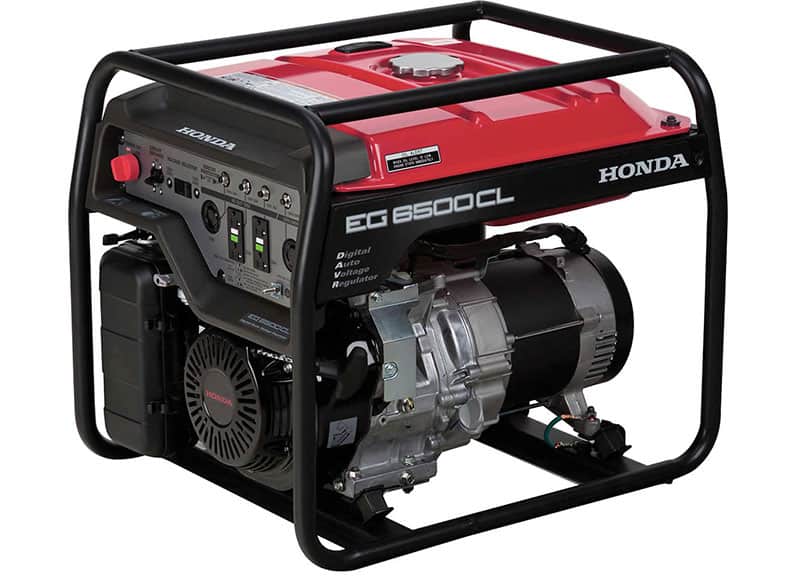
Fuel Efficient
Many engines feature a precision camshaft design that ensures optimal valve overlap and timing. These elements and a high compression ratio can reduce the fuel you need for your power equipment, saving you time and money. Some also feature a digital CDI ignition system, which improves starting and emissions performance while optimizing ignition timing.
Quiet
Helical cut gears, an optimal piston design, and a state-of-the-art air intake system can help reduce the noise you experience when operating your Honda pumps and other power equipment. Some engine models will have multi-chamber exhaust systems and improved muffler and camshaft designs to reduce engine noise levels.
Reduced Vibrations
A smooth performance can affect the enjoyment you experience when operating your Honda outdoor power equipment, directly affecting how often you want to use the equipment. Honda engines are designed to deliver a smooth performance with reduced vibrations, thanks to the engines’ piston design and crankshaft supported by ball bearings.
Easy Starting
Many of the engines for Honda lawnmowers, pumps, and other types of power equipment come with heavy-duty recoil starters, variable ignition timing, and an automatic mechanical decompression system. The system reduces the force necessary to start the engine by opening the exhaust valve slightly when cranking on the equipment. In addition to these features, some engines also come with an electronic ignition for easy starting.
Emissions Compliant
When learning how to choose power equipment engines, certification from the California Air Resources Board (CARB) and the Environment Protection Agency (EPA) is essential. These two agencies help create specific regulations and standards to control engine emissions. By choosing engine models that meet these standards, you are keeping your carbon footprint as small as possible while enjoying the use of your power equipment. In addition to these certifications, many engines also eliminate the need for a catalyst; some have a charcoal canister built into the gas cap.
Overhead Valves
When it comes to engine functions, overhead valves (OHV) offer significant benefits over engines of the past. Older engines were flat, with their valves next to the block pistons. OHV engines feature valves in the cylinder head instead. The new layout ensures complete and faster exhaust while providing a higher compression ratio and better fuel intake. This reduces oil consumption, carbon build-up, and cylinder distortion while improving the engine’s lifespan.
Lightweight
While not every engine is lightweight, many do offer this advantage. Their lightweight and compact design is thanks to a uni-block design and internal timing belt. The weight of these engines is advantageous for outdoor power equipment, such as Honda portable generators and trimmers, that must be carried to specific locations or held for long periods.
Internal Timing Belt
The internal timing belts of Honda small engine models not only reduce the overall weight of the engines by eliminating the need for the engine to feature traditional drive gears but are also designed to last the entire lifecycle of these parts. Unlike regular timing belts, these belts are not subject to dirt and grime, making keeping them lubricated simple.
Dua-Lube System
Ensuring the reliability of your engines is essential, and the DuaLube system does this by ensuring the engine is completely lubricated. It does this through the lubricated timing belt and governor slinger paddles.
Easy maintenance
When going through a list of engines, finding one that is easy to maintain isn’t always straightforward. Honda’s engines are designed to fill this need. They feature easy access to the oil fill, drain, and spark plug. The engine can also include an auto throttle and auto choke system. The latter system is only available with specific engines designed for fixed-throttle lawnmowers. It removes cables and levers, starting quickly whether the engine is hot or cold.
Oil Alert
This system is available on many Honda engines and is designed to ensure the safety of your new engine. On a standard engine, when the oil level becomes too low, the engine may seize. To prevent this, this system features a sensor that detects when the oil level reaches dangerous levels. As soon as this is detected, the engine will stop automatically to prevent damage from occurring or will warn you so you can stop the engine before it seizes.
360 Operation
Mini 4-stroke engines are designed to be operated in any position. This means they can be used or stored upside down, upright, or even on their sides and still function as they should. They can do this because of a rotary-slinger lubrication system and built-in passages that circulate oil to every area of the engine it needs to go while using a return port to prevent oil from entering the combustion chamber.
Increased Power
Increasing the power of many engines is done using an electronic governor. On a traditional engine, an open throttle decreases the amount of energy available to the engine. The throttle is more accurately and efficiently controlled when using an electronic governor. This allows for increased power.
High Capacity Oil Pump
Certain types of engines feature a high-capacity oil pump that helps deliver consistent oil to increase oil capacity, increase engine reliability, and ensure lubrication of certain engine parts, such as the flywheel and connecting rod bearings. This type of pump helps reduce engine noise, limit friction, and extend the life of your engine.
Engine Replacement Safety
There are many different air compressors, each designed for a particular use. This air compressor buying guide will help you decide which is best suited for your needs so that when you buy an air compressor, you’ll be sure to purchase the right one.
- When choosing a replacement engine, always maintain the same horsepower, fuel tank location, fuel line routing, muffler location, exhaust direction, starter type and position, and muffler accessories. Ignoring even one of these engine features can lead to problems that could affect the engine’s functions and your safety.
- Replace any missing or damaged parts. This will ensure your power equipment lasts longer and may help you avoid damaging other equipment parts during continued use.
- Always ensure all parts, guards, and shields are correctly placed before using the equipment.
Learning how to choose power equipment engines can be less expensive than buying a new piece of equipment. However, before you make a purchase, you’ll need to be sure you are choosing the correct models, the suitable types of engines, and the features you need.

